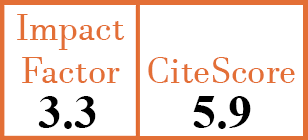Paediatric Rheumatology
Esophageal involvement in juvenile localized scleroderma: a pilot study
G. Guariso, S. Conte, F. Galeazzi, M.G. Vettorato, G. Martini, F. Zulian
CER3154
2007 Vol.25, N°5
PI 0786, PF 0789
Paediatric Rheumatology
Free to view
(click on article PDF icon to read the article)
PMID: 18078634 [PubMed]
Abstract
OBJECTIVES:
To evaluate the esophageal involvement in patients with juvenile localized scleroderma (JLS).
METHODS:
A cohort of patients with JLS underwent esophageal stationary manometry to evaluate esophageal motility and lower esophageal sphincter (LES) function, distal esophagus 24-hour pH-monitoring to detect gastroesophageal reflux (GER) and upper gastrointestin-al (GI) endoscopy to evaluate the presence of esophagitis.
RESULTS:
Fourteen patients (10 female, mean age 13.3 yrs, mean disease dur-ation 4.7 yrs), took part in the study. Ten had linear scleroderma, three deep morphea, and one generalized morphea. Esophageal abnormalities were found in 8/14 patients (57%): pathological acid exposure on 24-hour pH-monitoring was found in 7; non-specific esophageal motor abnormalities in 5 and endoscopy-proved esophagitis in 5 symptomatic patients. Interestingly, 5 out of 8 patients with esophageal abnormalities were found to be ANA positive, and 2 were also RF positive.
CONCLUSIONS:
Esophageal involvement is not unusual in patients with juvenile localized scleroderma, even in the absence of specific symptoms. These preliminary findings, if confirmed in a larger cohort of patients, may support the indication for an extensive GI evaluation especially in presence of positive autoantibodies or specific GI symptoms.


